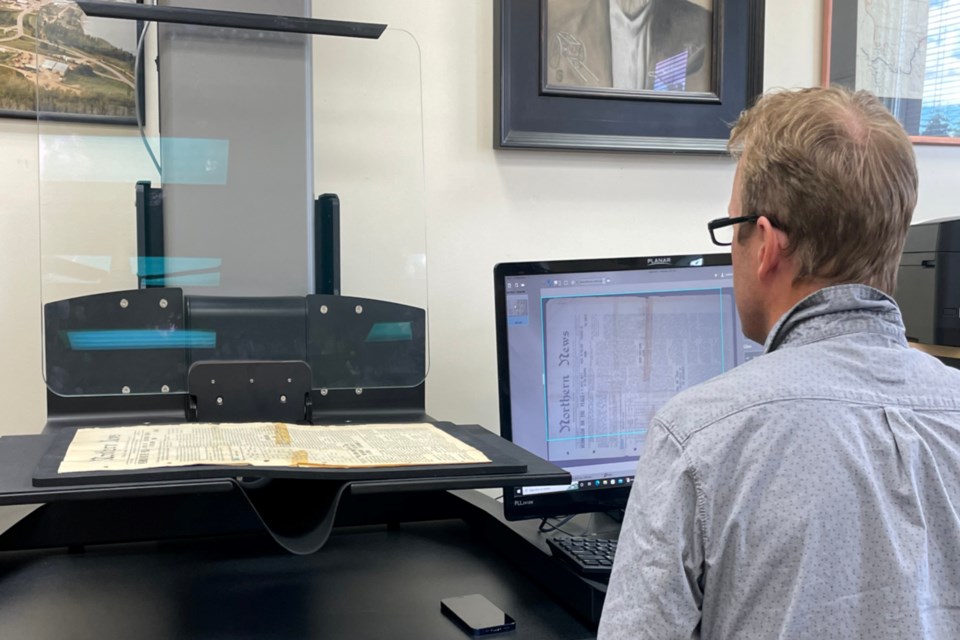ATHABASCA — A whole new world will be opened for patrons of the Alice B. Donahue Library and Archives thanks to a new digitizer.
When James MacDonald became the executive director of the Northern Lights Library System (NLLS), which the local library is a part of, he found an expensive piece of equipment stored away, collecting dust.
“This machine was purchased five or so years ago,” said MacDonald while he was setting it up Sept. 1. “When I arrived, it was sitting and gathering dust; we needed to find someone who can put it to use so, here it is.”
Athabasca is the only community within NLLS that has the active archives, so the machine, made in France, can scan large and oddly shaped items like maps and books into digital representations. It was sent from Elk Point to Athabasca to be productive again and MacDonald wasn’t going to turn down a chance to preserve even more history.
“We’re a public library system, we don't do digitization like this,” MacDonald said. "And then, there is one archive in the system and that’s Athabasca.”
The manual is missing but MacDonald wasn’t afraid to play around with the program on the computer which runs the machine, and it turned out to be simple.
“I've played with digitization machines before,” he said.
“As soon as you do an OCR (optical character recognition) file with it, then it's an image with searchable text,” said MacDonald.
Imagine sitting in a café in France trying to find some information about an ancestor who had been in Canada in the early 1900s, you type their name in and suddenly a copy of the Northern News, Athabasca’s first newspaper, pops up on your screen with the name in an article.
That is the magic of the digitizer, it has many settings and one of them can render a photograph readable to search engines.
“If I'm doing research, I can search the Internet archives and up comes the page right there and that's just genius,” he said.
Right now, the archives has original and microfilm copies of every edition of the Northern News, Athabasca Echo, and Athabasca Advocate they can find, but the older copies, many of them over 100 years old, are delicate, and microfilm diesn't provide for high quality images, nor it is searchable online.
"The microfilm does not look like that,” said archivist Margaret Anderson, who is now the custodian of the digitizer. “Wow!”
MacDonald was also excited to see the crisp, clean photo of the front page of a 1905 Northern News appear on the computer screen, “That is so awesome!”
Access to the machine will be during regular archive hours every week and depending on skill level, Anderson will either do the scanning herself, or teach the person needing to use it how.



